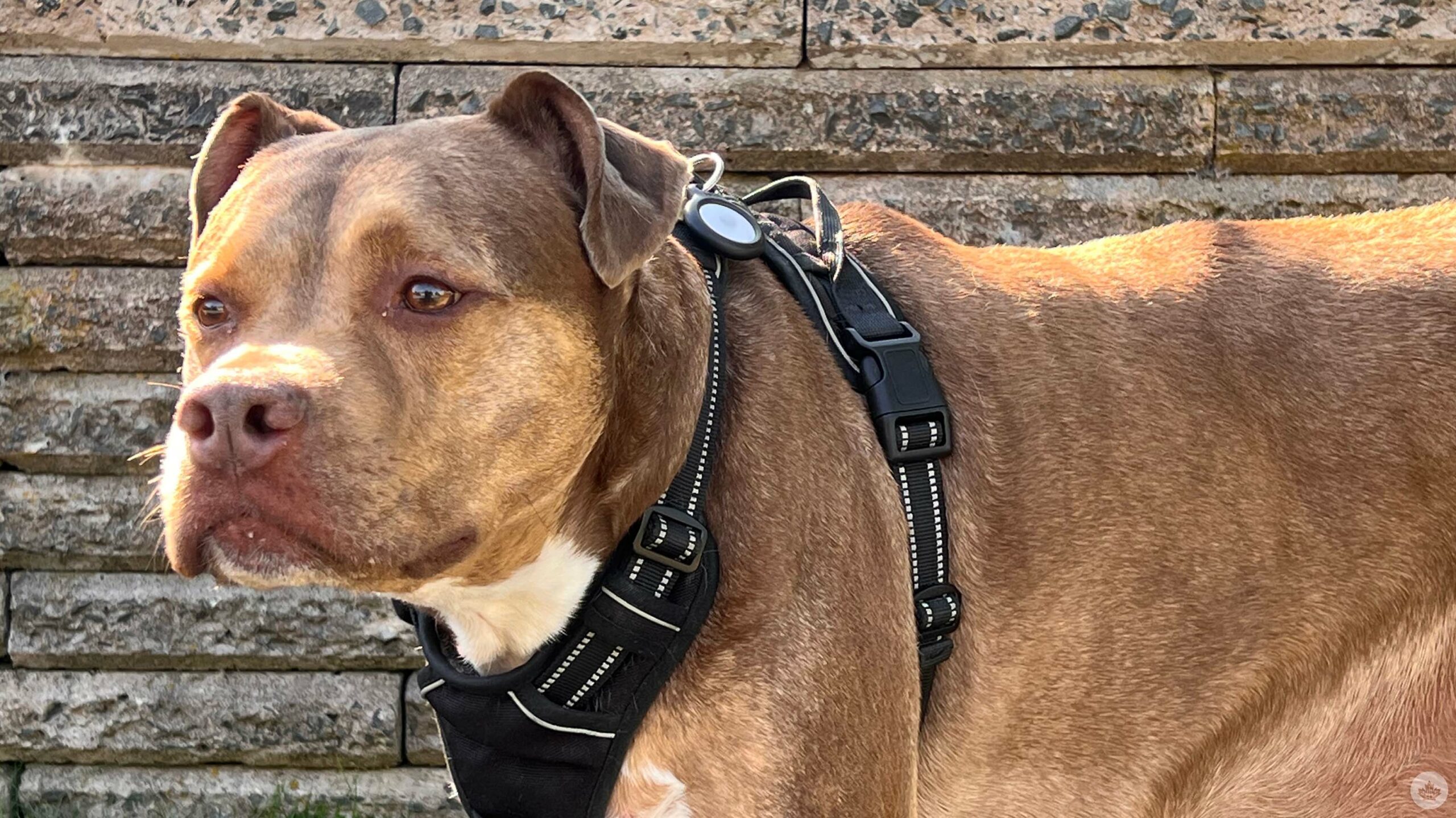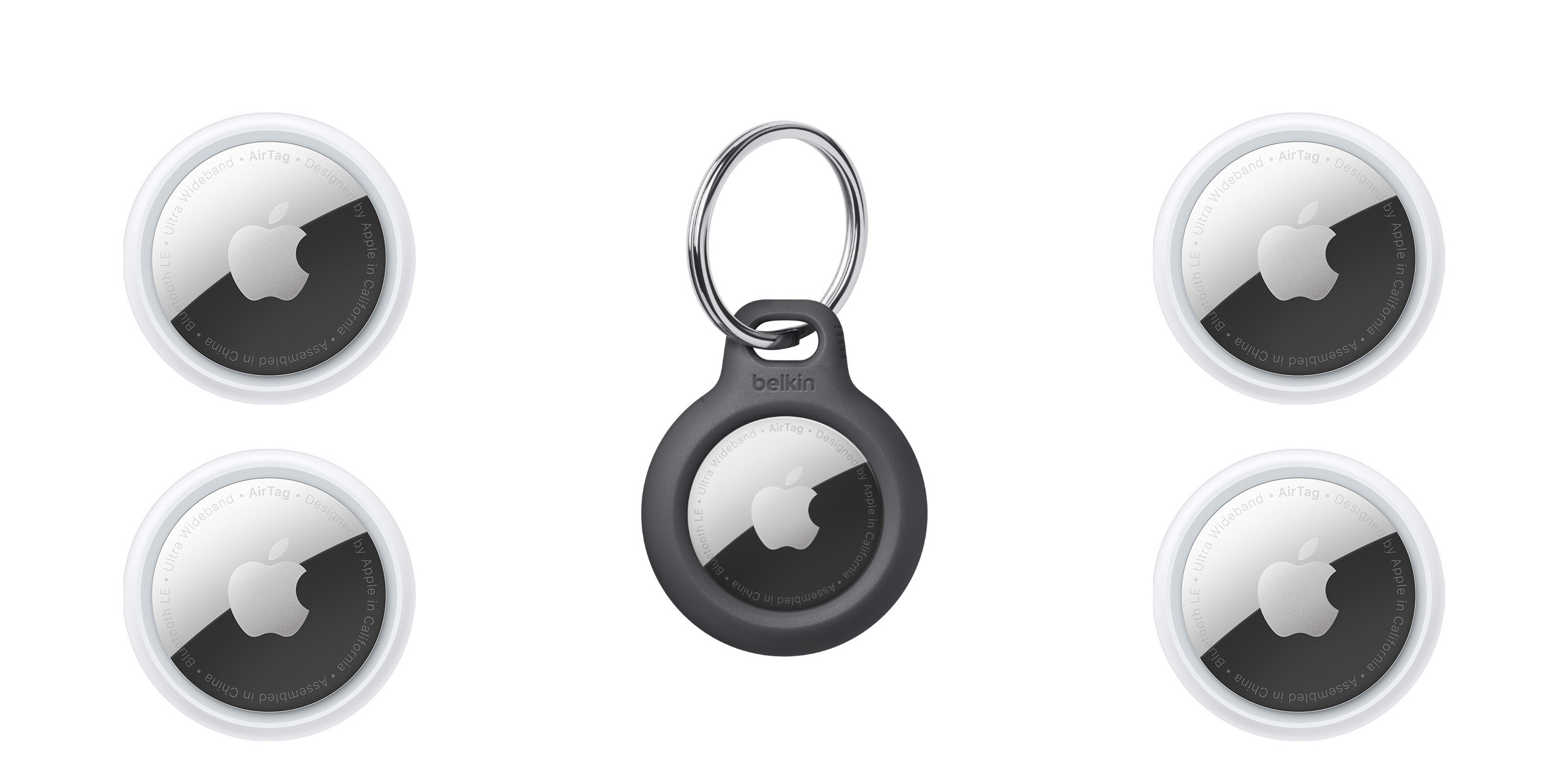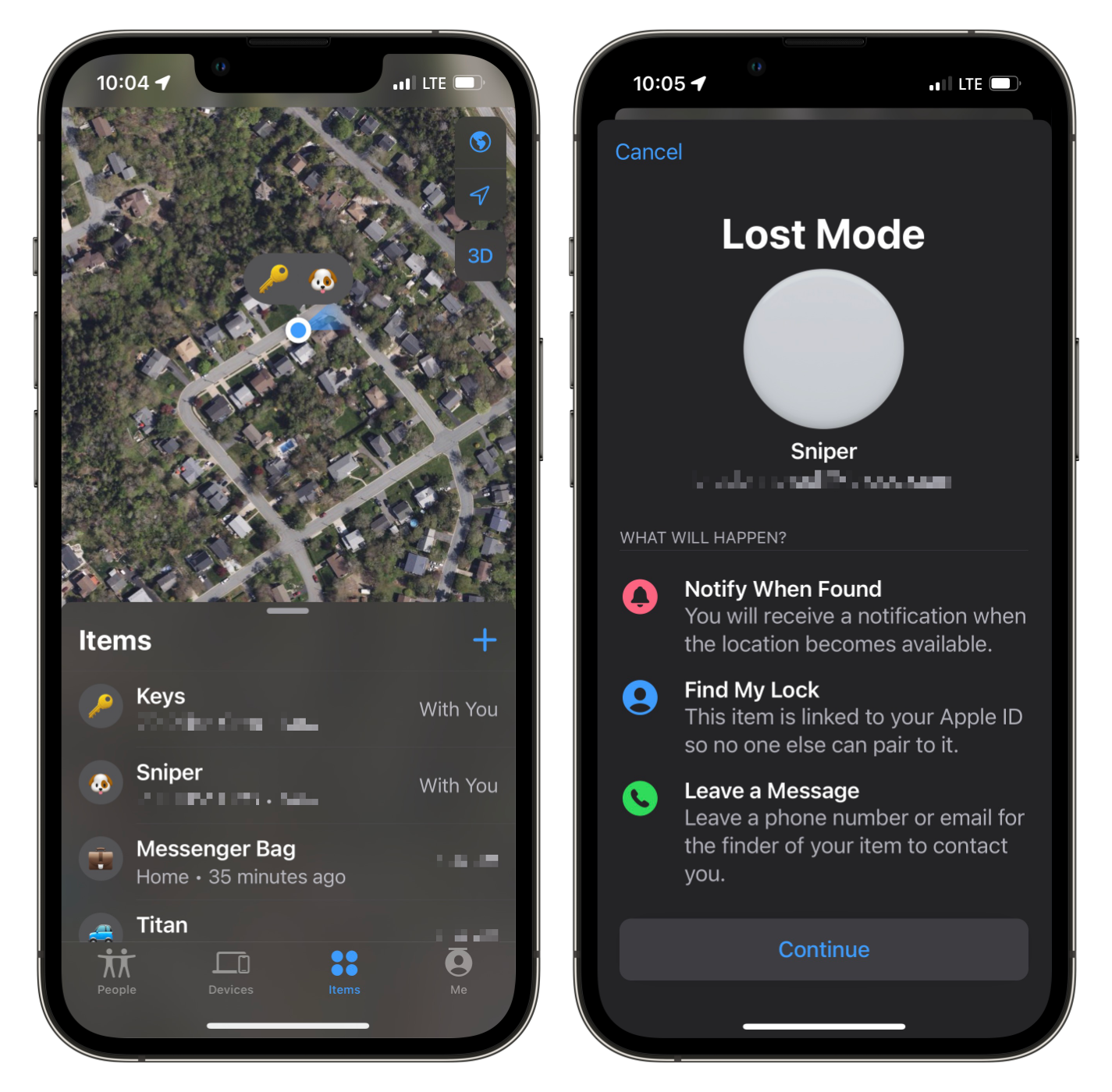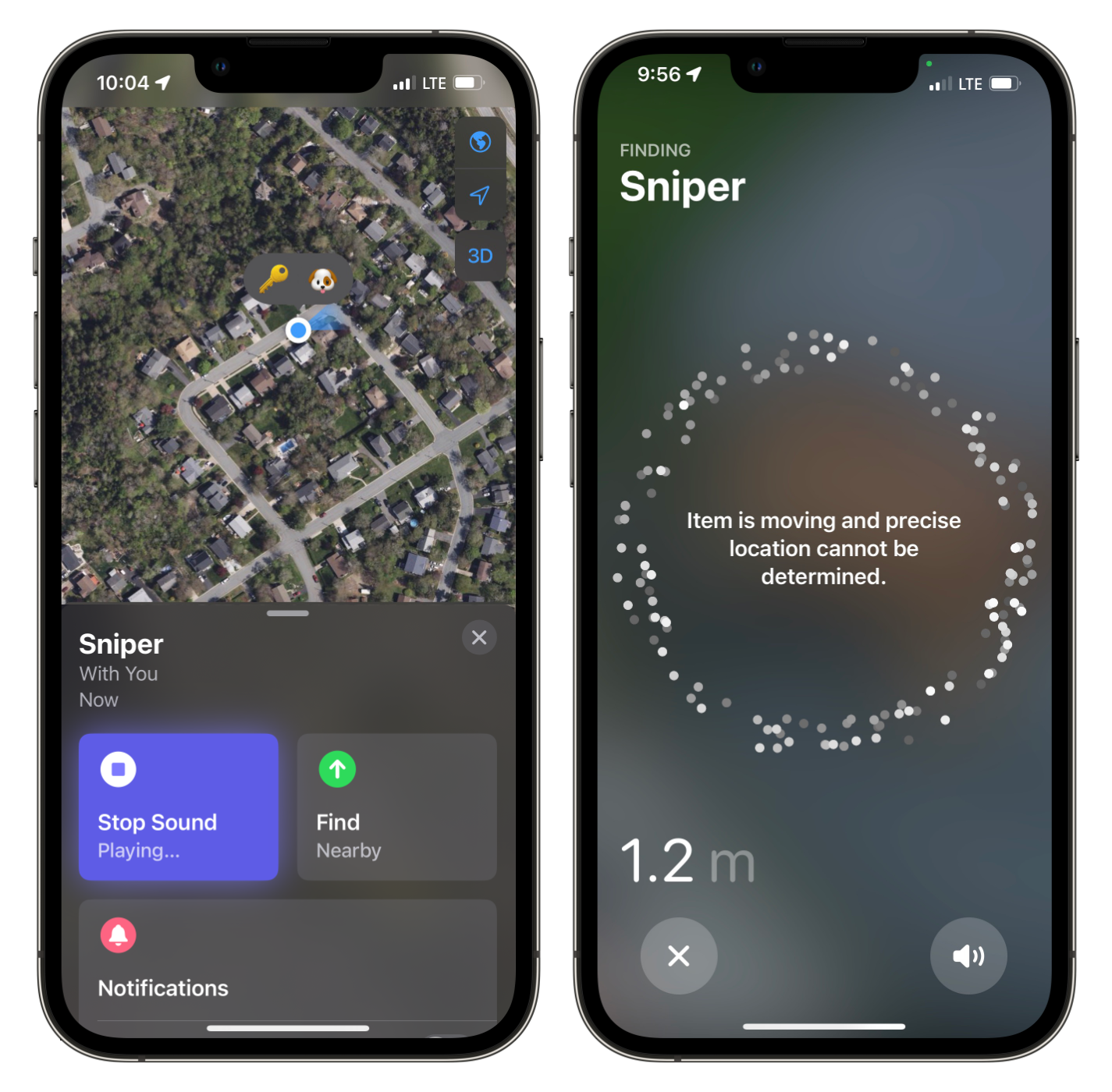
Dog owners all have one thing in common — they all really love their dogs. I’ve had my dog, Sniper since I was in high school. Despite my mother’s misgivings, I got him as a puppy, and now he’s approaching nine years old. It’s wild how time flies. He’s a bulldog-American Staffordshire Terrier mix with a single, distinctive white paw.
To a dog owner, nothing is worse than losing their best friend. When Sniper was younger, he would run off the moment he got off-leash, sparking some heart-racing moments trying to get the little sprinter back. As Sniper has gotten older, calmer, and more obedient, him running off has become less of a concern. But, still, a fear that I’m sure every dog parent has no matter their age.
When Apple released AirTags last year, I considered it the perfect product to attach to Sniper’s harness to help to keep track of him in case he ever ran off. This article looks at my personal experience of using an AirTag to keep tabs on my furry best friend.
The reason I went with an AirTag

There are three main reasons I went with an AirTag to track my dog: affordability, accessibility and simplicity. A quick Google or Amazon search will pull up endless results of GPS trackers for pets. However, many of these results cost hundreds of dollars, require a subscription, or rely on LTE service.
This leads to AirTags’ first selling point, affordability. A single AirTag is $39 from Apple, while a four-pack is $129. The AirTag uses Apple’s ‘Find My’ network to avoid needing a subscription fee or another monthly mobility bill. Apple’s Find My network leverages encrypted low-powered Bluetooth pings with other Apple devices to share an AirTags’ location. While an AirTag and Apple’s Find My network will not be responsive as a more expensive GPS tracker, the likelihood of Sniper running away is incredibly small for me. Therefore, the AirTag is there for a worst-case scenario. Add a durable AirTag holder like the Belkin Secure Holder for $15.95, and you have a small, reasonably inexpensive item tracker with no subscription fee.
The second benefit is accessibility. Getting an AirTag is incredibly easy. You can pick up an AirTag at your local Apple Store, order them on apple.ca, or have one Prime Shipped from amazon.ca. Compare this to a GPS tracker, which you’ll want to research and then wait to arrive. All the while, Apple and Amazon have decent return policies if the AirTag doesn’t quite meet your needs.
Lastly, AirTags are simple. Simple to set up and simple to use. Once you unpackage an AirTag, a prompt appears on your iPhone asking if you’d like to pair it to the AirTag. Once paired, The AirTag appears under the ‘Items’ tab in the ‘Find My’ app. From the Find My app, you can ping the AirTag, get the AirTags location, and mark the AirTag as lost. The Find My app even offers widgets on macOS and iOS.
The Positives

The ultimate value that the AirTag gives me is some degree of peace of mind. Knowing that if something happens where Sniper runs off, I have dramatically increased my chances of being able to find him.
The AirTag makes this possible in a few different ways. First, there’s the location presented in the Find My app. Assuming Sniper runs into another human with an iPhone, I’ll have his updated physical location pretty quickly. Second, while Sniper has a traditional dog tag with his name and my phone number on it, someone with an iPhone or the Tracker Detect app on Android can identify the AirTag and obtain my contact information. This is made even easier once the AirTag is marked as lost in the Find My app.
To mark an AirTag as lost:
1. Launch the Find My app on iOS or macOS
2. Tap/click ‘Items’
3. Select your pet
4. Tap/click ‘Enable’ under Lost Mode
5. Tap/click ‘Continue’
6. Type in your phone number or select ‘Use an email address’
7. Tap/click ‘Next’
8. Tap/click ‘Activate’
AirTags also features a speaker and U1 chip. The speaker allows for a noise to be played from the AirTag, hopefully enabling you to find your dog when they’re hiding in some tall grass or just out of sight. The U1 chip allows for a feature called precision finding, where iPhone 11 and above can give you the direction and approximate distance of the AirTag.
To play a sound or use precision finding on an iPhone:
1. Launch the Find My app
2. Tap ‘Items’
3. Select your pet
4. Tap ‘Play Sound’ or ‘Find’
Hardware-wise, the AirTag seems built to handle a dog’s life. They’re splash-, water-, and dust resistant for a maximum depth of one metre for up to thirty minutes. AirTags are relatively durable, especially when paired with the proper AirTag holder. They also feature a replaceable CR2032 coin battery that lasts for around a year.
The Negatives

Of course, the AirTag isn’t perfect, either. Right off the bat, if your dog has a habit of running away often or you live in a very rural setting, you may want to consider a proper GPS tracker designed for pets. AirTags are ideal for more urban environments where there are plenty of iPhones to run into.
The speaker of the AirTag is all right at best. While it can be handy to try to listen for the AirTag when your pet is out of sight, it’s not the strongest of noises meaning it can be a struggle to hear while outside.
AirTag precision finding also doesn’t love moving objects. While Precision Finding still provides you with an approximate distance, it won’t give you a directional arrow while the AirTag is moving. Not the best while tracking a speedy dog.
AirTags have also had a lot of privacy concerns placed around them recently due to unwanted tracking. As a result, when your pet spends a lot of time around another person, they may get alerted that an AirTag is following them around. I had this happen recently when I went on vacation, and my brother looked after Sniper. I pre-warned him that he may get an “unknown item” alert on his iPhone and not to worry about it. The AirTag did just what it was supposed to do. It reported Sniper’s location while I was out of the Province. While my brother did get those potential unauthorized tracking alerts.
Final Thoughts
The AirTag isn’t the perfect pet tracker. However, it is affordable and fairly reliable if you want something to provide a little more peace of mind. Thankfully, I’ve never had to use the AirTag outside of testing it and frankly, I never want to have to. Losing a beloved pet is an experience no pet owner wants to go through. However, if you ever do, I hope an AirTag can help you find them.
MobileSyrup may earn a commission from purchases made via our links, which helps fund the journalism we provide free on our website. These links do not influence our editorial content. Support us here.


